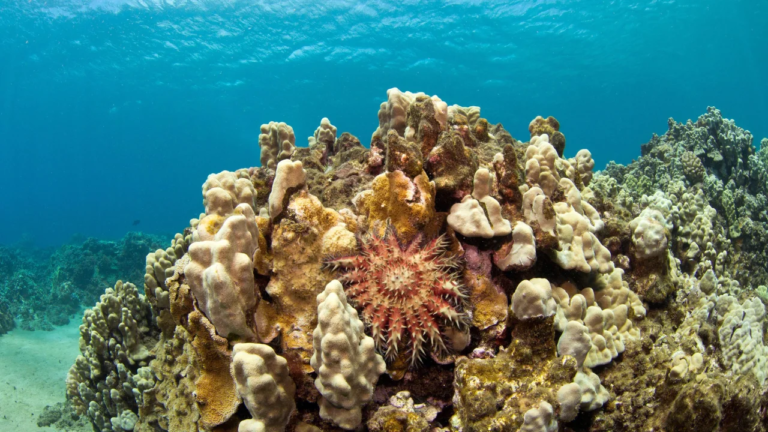By Ariane de Vogue, CNN Supreme Court Reporter
Published 3:31 PM EST, Wed November 6, 2019
CNN —
The Supreme Court grappled Wednesday with questions about the scope of the Clean Water Act and the Environmental Protection Agency’s authority to regulate pollutants that find their way into navigable water such as oceans, rivers and streams.
The case centers on a once-pristine reef in Maui, Hawaii, that environmental groups say has been devastated by pollutants from a wastewater reclamation facility. But it could have broad implications on navigable waters across the United States and significantly limit the reach of the Clean Water Act.
At oral arguments, several of the justices were sympathetic to environmental concerns but also seemed concerned with the breadth of a lower court opinion that could force large counties and even single family homeowners to acquire expensive and burdensome permits under the law. Over an hour – at times testing wild hypotheticals involving whiskey, spiked punch and Agatha Christie – they couldn’t seem to settle on a middle ground position.
The law requires those who discharge pollutants into navigable waters from pipes or wells to obtain a federal permit. But the question presented in the case is whether such permits are also required for pollution that travels some distance from the pipe or well through groundwater and makes its way into navigable water.
The County of Maui owns and operates four wells at the Lahaina Wastewater Reclamation Facility, the principal wastewater treatment plant for West Maui. The wells receive approximately 4 million gallons of sewage per day from a collection system that serves about 40,000 people. The sewage is treated and either sold for irrigation purposes or injected into the wells for disposal. Some of the treated wastewater in the wells eventually reaches the ocean.
After a challenge from environmental groups, the 9th Circuit Court of Appeals held that the county violated the Clean Water Act because it hadn’t obtained proper permits. The court said that the law applied to pollutants from the well that had made its way to the ocean via groundwater.
Elbert Lin, a lawyer for the county, told the justices Wednesday that the opinion was so broad it would force the county and its taxpayers to face massive liability and fines.
Lin said the ruling would “radically change the status quo.”
He said that a permit may be required for pollutants that travel through a well or pipe into the Pacific Ocean, but a permit should not be required for pollutants that travel through groundwater and end up in the ocean.
Justice Stephen Breyer suggested that the county’s interpretation of the law, where the permits at issue weren’t necessary for pollutants in the groundwater, would provide an “absolute road map” for polluters who would simply choose to evade the law by cutting off a pipe “five feet” from the water’s edge in order to avoid having to get a permit.
Justice Elena Kagan agreed. “Nobody would ever have to go through that process of getting a permit” if they knew they could just stop a pipe “five feet before the ocean,” she said.
Lin suggested state laws could go into effect to cover such a circumstance.
But when David L. Henkin – a lawyer for the group Earthjustice representing environmental groups – stood up to argue, Breyer pressed him on the breadth of his argument.
“It puts all kinds of people in the position of having to get a permit,” Breyer said, and noted that he was worried about “500 million people” suddenly discovering that they have to “go apply for a permit for the EPA.”
Henkin persisted.
“In the decades since the Lahaina Facility opened,” Henkin argued, “nutrients and other pollutants from injected sewage have devastated” the reefs.
Breyer floated a new test that could guide the lower courts. He suggested that under his standard a permit would be required for the “functional equivalent of a direct discharge” into the waters.
Chief Justice John Roberts pounced.
“What does ‘functional equivalent’ mean?” he asked to laughs.
The justices battled back and forth searching for a standard the courts could use going forward but also struggled with determining how the source of the pollution could be traced. A lawyer for the EPA, arguing in support of the county, stood up with a hypothetical no one on the bench seemed to fully comprehend.
“If at my home I pour whiskey from a bottle into a flask and then I bring the flask to a party at a different location and I pour whiskey into the punch bowl there, nobody would say that I had added whiskey to the punch from the bottle,” Deputy Solicitor General Malcolm L. Stewart said.
He was met with blank stares.
Some justices worried that a homeowner with a faulty septic tank would suddenly have to get a permit.
At one point, Roberts joked that determining the source of the pollution could be akin to solving a mystery.
“It’s an Agatha Christie novel,” he exclaimed.
Kavanaugh wondered if the state, not the federal government, could address the issue.
At the end of arguments, Justice Sonia Sotomayor brought the case back to the polluted reef, asking: “What is being done?”
“They still are polluting, they’re getting away with it, so something failed,” she added.
Original Post: https://www.cnn.com/2019/11/06/politics/supreme-court-clean-water-act-pollution/index.html

